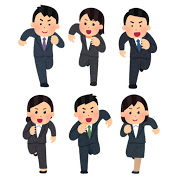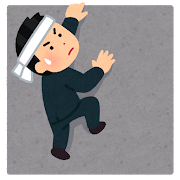What is Hatarakikata-Kaikaku(働き方改革)"Work style reform"?

Hatarakikata-Kaitaku(働き方改革)-Work Style Reformation
"Working Style Reform Promotion Council" was established in the Cabinet Secretariat in March 2017. It was held to improve treatment, improve labor productivity, correct long working hours, improve the environment for flexible working styles, and promote the active participation of diverse human resources. Therefore, it has already been four years since this work style reform came into effect.
The reason why it was enforced is that Japan is facing situations such as "declining working-age population due to declining birthrate and aging population" and "diversification of working-age needs such as balancing childcare and long-term care".
Also, based on data from the Organization for Economic Co-operation and Development (OECD), Labor productivity was estimated to be 47.9 US dollars in Japan in 2019, only 60% of the United States (77 $). Japan ranked 21st among the 37 OECD member countries.

What's happening at the workplace?
As a human resources business, I have been watching the Japanese workplace for many years. Certainly, working hours have clearly changed when comparing the office situation around FY2001 with the present. In early 2001, employees rarely left the office around 17:00.
I think many office workers worked overtime until about 20:00. There was also company culture that employees should not return before their boss leaves. There was a scheduled leave date specified by the company, and it seems that some employees returned at 17:00 on that day only.
Now in 2021, the situation has changed a lot. Partly due to the impact of the Corona crisis, the number of employees who finish their work at 17:00 is steadily increasing.
On the contrary, the fact is that the number of employees begging to work after 17:00 is increasing. This is to make money because some Japanese employees live to rely on overtime wages. It is rational to curb working hours for employer, but it seems that Japanese people who have never experienced it before come here and are confused.
Is work style reform only to control overtime hours?
Many employees are also questioning as followings;
"Is work style reform only to control overtime hours?"

There seems to be no sign that labor productivity is improving just because overtime has been curtailed. It is not surprising that employees have such questions.
It seems that work style reform requires other factors such as human resource development, business reform, and innovation, but it seems that very few employees still feel that they are enjoying it.
Questionnaire on how to implement "work style reform"
(Gakujo Co., Ltd./Announced on May 7, cited from the company's press release)
(1) 78.2% of companies are "company-wide" working on "work style reform"
(2) “Encouragement to take paid leave” was the most frequently used for “work style reform” at 91.4%. Next, "reduction of overtime work"
(3) “Issues in employee retention” was the most frequently resolved issue at 44.7% in the promotion of “work style reform”.
Work style reform is attracting attention in Japan, but from the perspective of employees, it seems that the essential issue has not yet been resolved.



